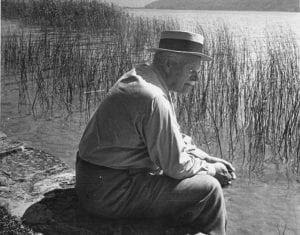The development of Ego Consciousness is a ‘crime’ against the original state of Wholeness that preceded it.
Reparations must be made to the unconscious for this ‘crime’. That is what Jungian Psychology tries to accomplish. Edward F. Edinger
Note: A complete citation is needed.
“The drama of temptation and fall begins when the original state of passive inflation turns into the active infla- tion of a specific deed.
The serpent’s whole approach and appeal is expressed in inflationary terms—when you eat of this fruit, your eyes will be opened and you will be like God.
So the fruit of the tree is eaten and the inevitable consequences unfold.
It all begins because Adam and Eve dare to act on their desire to be like God.
The myth depicts the birth of consciousness as a crime which alienates man from God and from his original preconscious wholeness.
The fruit is clearly symbolical of consciousness.
It is the fruit of the tree of the knowledge of good and evil, which means that it brings awareness of the op- posites, the specific feature of consciousness.
Thus, according to this myth and the theological doctrines that rest on it, consciousness is the original sin, the original hyhris, and the root cause of all evil in human nature.
However, others have understood it differently.
The Ophites, a Gnostic sect, worshipped the serpent.
They had essentially the same view as modem psychology.
To them the serpent represented the spiritual principle symbolizing redemption from bondage to the demiurge that created the Garden of Eden and would keep man in ignorance.
The serpent was considered good and Yahweh bad.
Psychologically the serpent is the principle of gnosis, knowledge or emerging consciousness.
The serpent’s temptation represents the urge to self-realization in man and symbolizes the principle of individuation.
Some Gnostic sects even identified the serpent in the Garden of Eden with Christ.
Eating the forbidden fruit marks the transition from the eternal state of unconscious oneness with the Self (the mindless, animal state) to a real, conscious life in space and time.
In short, the myth symbolizes the birth of the ego.
The effect of this birth process is to alienate the ego from its origins. It now moves into a world of suffering, conflict and uncertainty.
No wonder we are reluctant to take the step to greater consciousness (Picture 4).”Edward F. Edinger, Ego and Archetype, Page 19.


No comments:
Post a Comment